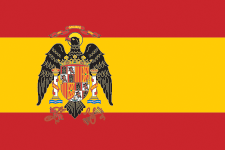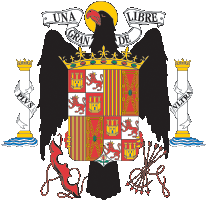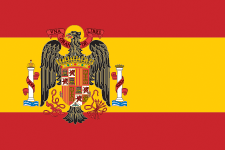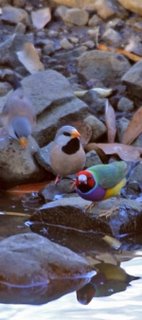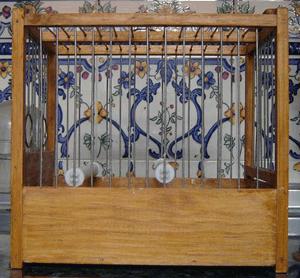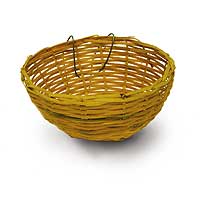 Tower of London
Tower of LondonThe great central keep was built by William the Conqueror and finished by his sons and successors, William Rufus and Henry I. It is 90 feet high and is of massive construction, the walls varying from 15 feet thickness at the base to almost 11 feet in the upper parts. Above the battlements rise four turrets; three of them are square, but that on the northeast is circular. This turret once contained the first royal observatory.
The original single entrance was on the south side and it was reached by an external staircase. There were no doors at ground level. The walls on the upper floors were penetrated by narrow slits positioned in wide splays. On the southern side, four pairs of original double slits remain. In late 17th and early 18th centuries all others were replaced by Sir Christopher Wren with the windows seen today.
In the White Tower the medieval kings of England lived with their families and their court. Here was the seat of government and here the laws of the land were made. The royal family lived in the top storey; the council chamber was on the floor below. In this chamber in 1399 Richard II
was forced to sign away his throne, and in 1483 Richard III summarily sentenced Lord Hastings to death.
Top: The White Tower with its distinctive one round tower prominent. Bottom: Another view of the White Tower. The U-shaped extension of the tower is the part that contains the Chapel of St. John the Evangelist. At bottom right, are large Roman ruins.
HER MAJESTY'S PALACE AND FORTRESSTHE TOWER OF LONDON
THE TOWER RAVENS
In honour and celebration of Hardey the raven's 21 years of loyal service at Her Majesty's Palace and Fortress, The Tower of London.
http://www.shamans-sf.org/raven/tower_ravens.htmlHardey and the Raven Master, Derrick Coyle at the Tower of London
It is not known when the ravens first came to the Tower of London, but their presence there is surrounded by myth and legend. Unusually for birds of ill omen, the future of both Country and Kingdom relies upon their continued residence, for according to legend, at least six ravens must remain lest both Tower and Monarchy fall.
The first Royal Observatory was housed in the north eastern turret of the White Tower. Legend has it that John Flamsteed (1646 - 1719), the 'astronomical observator' complained to King Charles II that the birds were interfering with his observations. The King therefore ordered their destruction only to be told that if the ravens left the Tower, the White Tower would fall and a great disaster befall the Kingdom. Sensibly the King changed his mind and decreed that at least six ravens should be kept at the Tower at all times to prevent disaster.
The Raven Master Derrick Coyle is a Yeoman Warder or 'Beefeater' dedicated to caring for the Tower's unique Unkindness of Ravens.
Meet The Ravens
There are seven ravens at the Tower today ( the required six plus one spare!) Their names are Hardey, Thor, Odin, Gwyllum, Cedric, Hugine and Munin. Their lodgings are to be found next to the Wakefield Tower.
The ravens consume 6oz. of raw meat and bird formula biscuits soaked in blood each day. They are very partial to an egg each once a week plus the occasional rabbit which is given to them whole as the fur is good for them! They also enjoy scraps from the mess kitchen at the Tower - they particularly like fried bread!
To prevent the birds flying away one of their wings is clipped by the Raven Master. This does not hurt the raven nor does it harm them in any way. By unbalancing their flight it ensures that they don't stray too far from the Tower.
Escape from the Tower!
However despite the wing clipping, there have been occasional escapes. Grog was last seen outside an East End pub called the 'Rose and Punchbowl' in 1981. Like Hardey he had been at the Tower for 21 years but unlike Hardey, Grog obviously felt he needed a change of scene!
Bad Behaviour
Occasionally ravens have to be dismissed for bad behaviour. This happened to George who received his marching orders in 1986 after he developed an unhealthy taste for TV aerials:
"On Saturday 13th September 1986, Raven George, enlisted 1975, was posted to the Welsh Mountain Zoo. Conduct unsatisfactory, service therefore no longer required."
Ravens can live to a very ripe age. The oldest raven to live at the Tower was called Jim Crow who died at the age of 44. The oldest raven currently at the Tower is Hardey who is 24 years old.
Ravens in WartimeThe fortunes of the Tower Ravens reached their lowest point just after World War II when only Raven Grip was left at the Tower. It is believed that the birds were upset by the continuous bombing of London. There is also the suggestion, although it has never been proved, that one raven, Mabel, was kidnapped!
Since 1987 the Tower has undertaken a successful breeding programme for the ravens. Charlie and Rhys paired up and produced a total of 17 chicks.
Two of the newest recruits came from the Owl Sanctuary in the New Forest having been rescued as fledglings. Called Odin and Thor, they have been at the Tower since 1997. Thor is a very good mimic.... on a quiet day he will repeat things the Raven Master has said to him with exactly the right tone to create all sorts of confusion!
memories:
http://www.guardian.co.uk/monarchy/story/0,2763,1351402,00.html





































